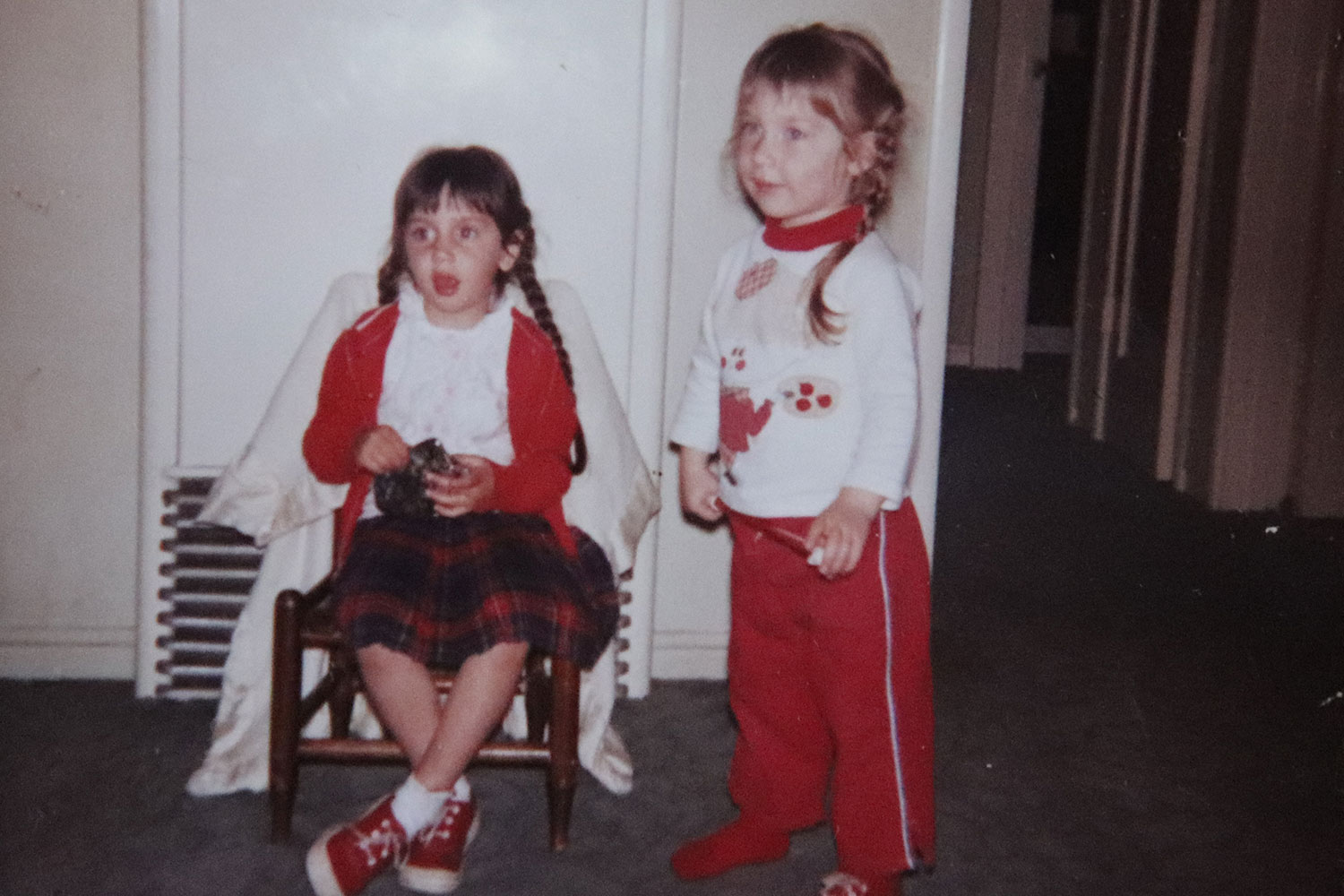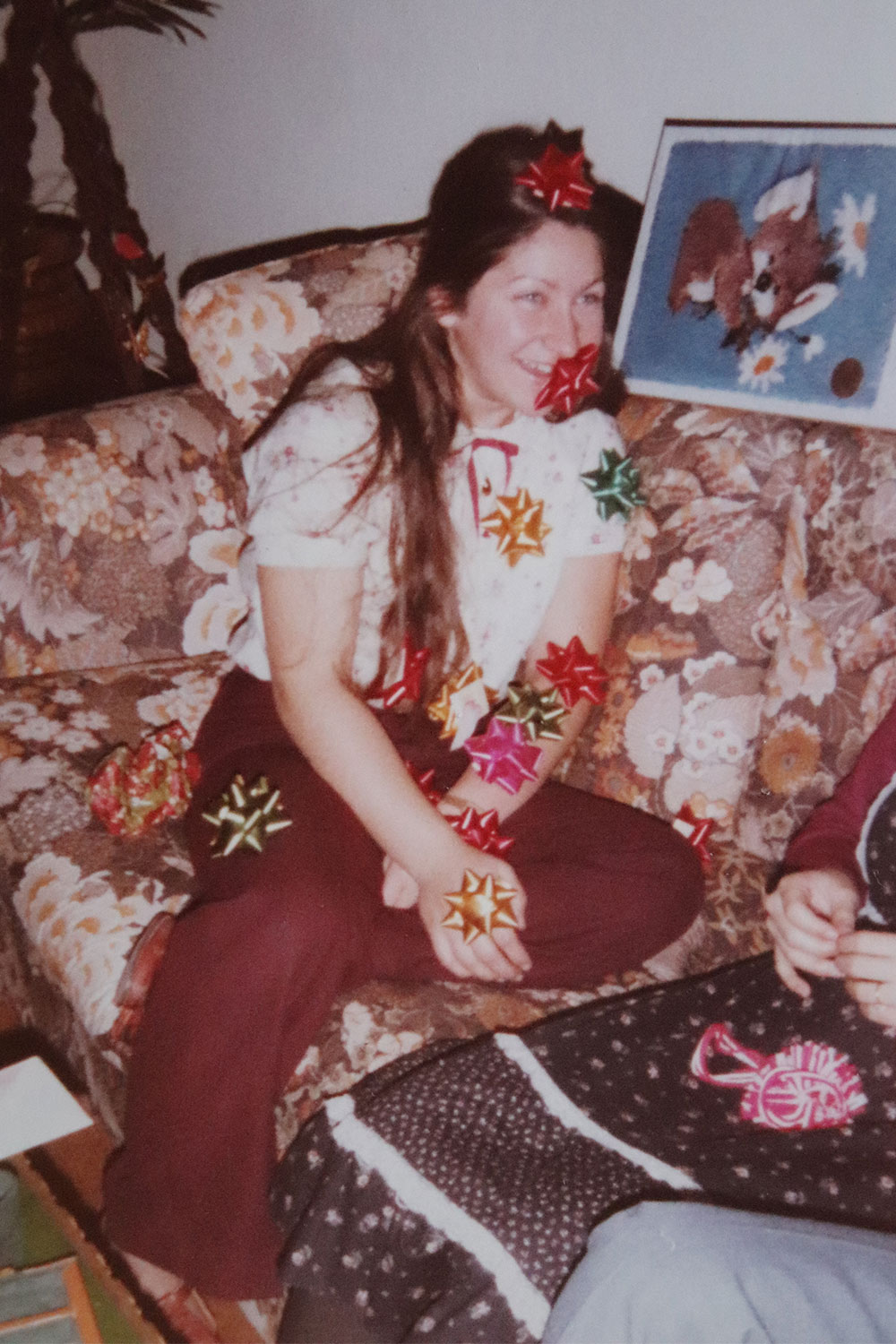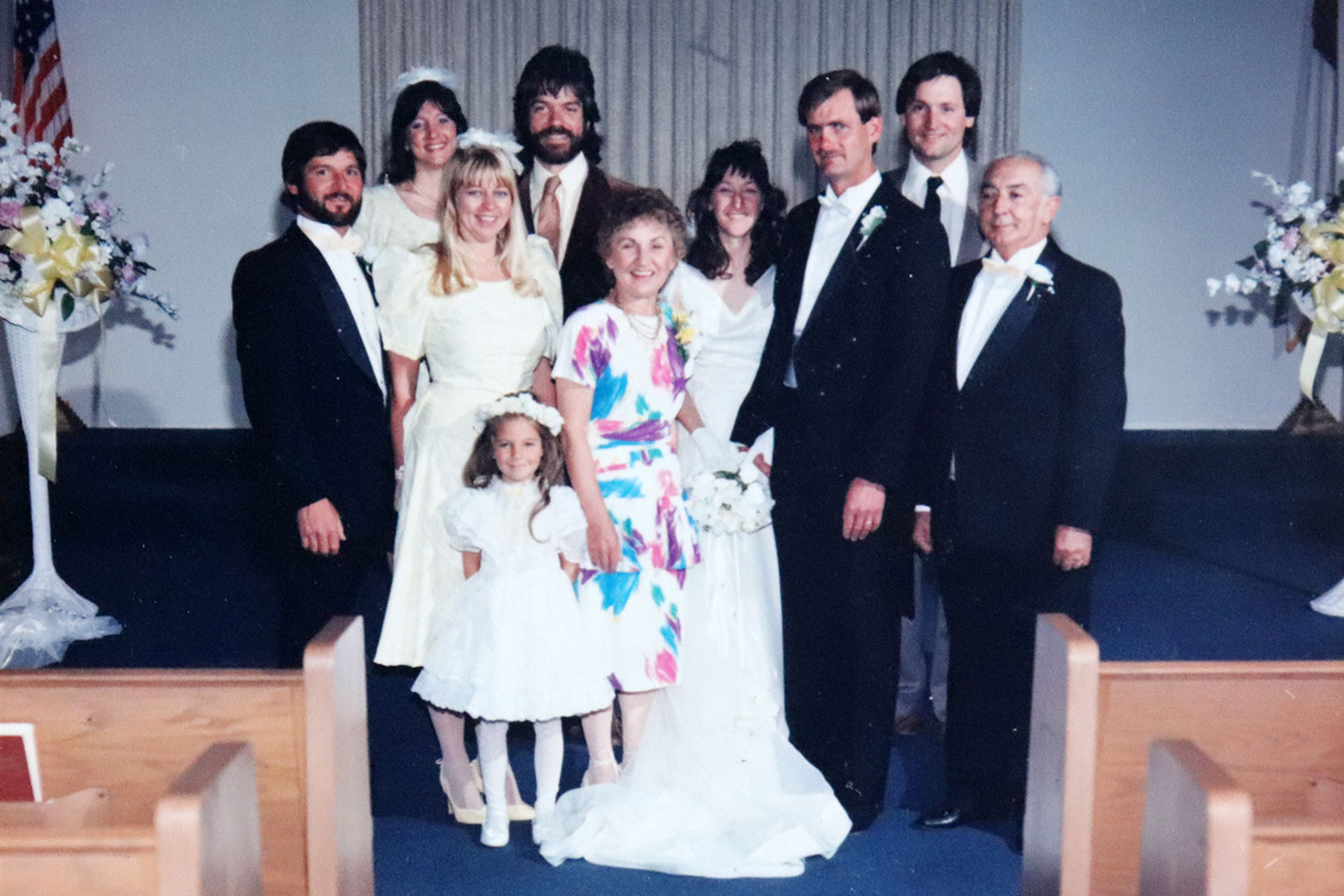In 1979 she graduated as a class leader in a large Bay Area high school.
In 1982 she was a student at the University of Oregon.
In 1988 she married.
In 1989 she became a mother.
In 2010 she lost the home she owned in California.
In 2019 Annette Lorraine Montero, unhoused and apparently suffering from mental illness, was run over and killed by a garbage truck as she slept in a parking lot near downtown Eugene.
What people learned from news accounts after Montero’s death on an early Monday morning in August was that a homeless woman was crushed as she lay in a red sleeping bag next to the alley near 12th Avenue and Willamette Street.
None of her family members had been in contact with her in a decade. Remembering her in the days after her Aug. 26 death, several of Montero’s family members paint a fuller picture of Montero’s life — one filled with equal parts joy and tragedy, promise and disappointment, and love and estrangement.
The youngest of four children, Montero was born Feb. 7, 1962, to Emily and Al Montero at Eden Hospital in Castro Valley, California. With her two older brothers, Steve and Ron, and her older sister, Cindy, she grew up in the working-class Bay Area suburb of San Leandro.
Enlarge

Photo courtesy of Cindy Berkenmeier
Montero and her siblings had as normal a childhood as anyone in the late ’60s and early ’70s, says her sister, Cindy Berkenmeier.
“We did all the normal kid stuff,” Berkenmeier says. “There were a bunch of kids on our street and we would do things like ride our bikes or play hide-and-seek at night. And we lived close to the marina, so we’d go down there and watch the airplanes take off from Oakland Airport.
“We’d also pretend to go fishing in the marina around junior high age. It was ridiculous but, you know, we did it.”
In Berkenmeier’s telling, the Monteros were happy and secure. Though not wealthy, the family was never strapped for cash. Montero’s mother worked for the military for many years, and her father worked as a trucker and later in the San Francisco shipyard.
The parents would often regale Montero and her siblings with stories about the father’s crazy drives through the Sierra Nevada, or the mother’s work on a military base that was so secret that armed guards were usually nearby.
Enlarge

Photo courtesy of Cindy Berkenmeier
They vacationed at a family cabin at Lake Tahoe, where they would enjoy game nights, and swim and run around in the woods for a couple weeks each summer.
It wasn’t perfect. Montero’s parents would sometimes fight, and arguments could get physical — a fact that would haunt Montero for the rest of her life, possibly influencing later relationship decisions.
As Montero grew, so did her passions and interests. Once she reached high school, gone were the bike rides, the games of hide-and-seek and the pretend fishing expeditions, replaced by boys, school politics and high school band.
Just five feet tall and with a smile that could light up a room, Montero was popular with the boys at San Leandro High School, where she graduated in 1979. She played oboe and was involved in student government, either as treasurer, as Berkenmeier recalls, or class president, as Montero’s ex-husband remembers.
Always athletic, Montero played several different sports, including softball, gymnastics and cheerleading, though she wasn’t on the high school squad. Her parents encouraged all the children to be active in extracurricular activities, and Berkenmeier says Montero excelled at most things she took up.
Enlarge

Photo courtesy of Cindy Berkenmeier
After high school, Montero hung around in the Bay Area working different jobs, then in 1982 headed north, landing in Eugene, where she attended the University of Oregon for one term in fall 1982.
She returned to California, where she continued to pursue a degree in finance over the next several years at Cal State University, East Bay, but never graduated.
In California, she met Kenneth Herdt in summer 1983, and the two quickly fell in love.
Herdt was a friend of Montero’s brothers but, as Berkenmeier recalls, the older brother, Steve, didn’t want the two to date. Nevertheless, Montero and Herdt married in 1988 and in February 1989 Montero gave birth to a son, Kenneth Jr., followed less than three years later by a daughter, Lorraine.
During those years, family members say Montero worked as a checkout clerk at Safeway.
In the early years of their relationship, Montero and Herdt seemed to be the perfect couple. Herdt taught Montero how to windsurf — a sport she took to with ease, as usual — and the two would frequently be on the bay either windsurfing or sailing on their Hobie Cat.
They also enjoyed dancing and could frequently be found at San Leandro’s now-defunct Blue Dolphin dance club. Montero enjoyed fashion, and she liked to get “dolled up” for such events, Herdt says.
Her fun-loving, carefree demeanor began to fade, though, shortly after she became a mother, Herdt says.
“After our first child was born, she began to change,” he says. “I don’t really like to talk about it. She was very demanding and controlling.”
Berkenmeier remembers things a little differently. She says Montero sometimes complained to her about Herdt’s drinking and that, similar to their parents, marital disputes would sometimes turn physical.
Berkenmeier recounts one instance when Montero told her that Herdt had “bashed her head onto her car.”
Herdt disputes this. He says police and court records used in their divorce show a pattern of abuse at the hands of Montero, and recounts an instance in 1996 when she attacked him with her car.
Enlarge

Photo courtesy of Cindy Berkenmeier
Differing accounts of discord aside, it’s clear that around the time Montero became a mother, her marriage was on the rocks — and her behavior was beginning to change.
It’s not certain whether Montero was ever diagnosed with any kind of mental illness. Berkenmeier says she believes Montero may have received a diagnosis at some point, but can’t be sure. Montero’s older brother, Steve, tells Eugene Weekly in a text message that he has “the most info and records” about his late sister, but declined to be interviewed, citing advice from his lawyer.
People who saw her in Eugene say Montero was acting disoriented and fearful in the days before she was killed, and family members say she had been behaving oddly for years.
The day before she was killed, Montero visited Eugene’s First Christian Church, which offers services to the unhoused. The few people who interacted with her — mainly church staff — say she was distant, and she almost seemed like she was in a trance.
Pastor Dan Bryant wrote in a Facebook post that has since been shared more than 1,200 times that Montero had cut to the front of the line to get breakfast that Sunday, seemingly unaware or oblivious of others, and that she “didn’t quite understand the way things worked, or maybe didn’t care.” But, Bryant wrote, no one objected. “Maybe they understood that there are times when you need to give someone benefit of the doubt after a hard night on the street.”
Jeslyn Lemke, an assistant professor of journalism at Pacific University and a freelance journalist who writes for EW, says she met Montero about a week before her death. Montero was sometimes cheerful and lucid, Lemke says, but would also frequently lapse into incoherence. She introduced herself as Ann.
“When I met her, she was holding up a hubcap,” Lemke says. “And I asked her why she was holding up a hubcap, and she said she was receiving signals from the wires above us.”
Lemke says she offered to buy Montero a Coke, as well as to let her take a shower and sleep protected near her house. Montero accepted the drink and the shower, Lemke says, but the next morning she found Montero sleeping in a nearby alley.
It was “one of the most bizarre scenes I’ve ever seen in my life,” Lemke says. “She’d dragged everything up to the alley behind our house and was sleeping, but had one arm completely up in the air and the other arm propped up by a paint stick.”
Whatever may have caused Montero’s problems, family members say pivotal events in her life seem to have driven her deeper into despair.
After her divorce, Montero lost custody of her children — a situation from which her sister says Montero never really recovered.
Montero’s daughter, Lorraine Baldi, says that roughly between the ages of 6 and 14 she had periodic contact with her mother, and that early visits were generally good, but the relationship worsened in later years. She says the last time the two spoke, in around 2006, Montero, out of the blue, accused her of using drugs.
In the aftermath of the 2008 recession, Montero lost her Bay Area house. Her ex-husband, Herdt, says Montero got the family home in the divorce and managed to maintain it for several years. Then the mortgage holder sold her loan, and her payments ballooned to the point that Montero was unable to keep up.
Herdt and Berkenmeier both say Montero was able to sell the house before a pending foreclosure in 2010, but she never had stable housing again after that.
Family members say Montero kept up periodic contact over the next couple of years, but she began to tell them she was under attack by people who wanted to kill her.
Berkenmeier says Montero was mugged at gunpoint while on the streets, and in the wake of that event she retreated further. By the time Montero’s father died in 2011 and her mother died in 2013, she had ceased all contact with the family.
Berkenmeier says that after her parents’ deaths, the family split in a bitter probate dispute, but Montero was never involved. She says the older brother, Steve, was instructed by the probate judge to take measures to find Montero so she could receive her inheritance, but Montero was never found.
Enlarge

Photo courtesy of Cindy Berkenmeier
Berkenmeier says she isn’t sure what happened to Montero’s inheritance, but believes it should go to Montero’s children.
What Montero did between 2014 and 2019 is anybody’s guess. Berkenmeier says she’s aware of at least a couple of boyfriends Montero got hooked up with — relationships that ended badly, perhaps because of Montero’s mental health struggles. The family believes she spent the better part of the last decade on the streets.
Montero ended up back in Eugene sometime this year, 37 years after having briefly been a UO student and after years of struggling with homelessness and mental illness.
In security video taken that Sunday at First Christian Church, not too many hours before she lay down one last time in her red sleeping bag, Montero can be seen briefly dancing in the parking lot at the back of the church. If you blink, you might miss it, but for just a moment an unknown man joins her in her dance.
Montero’s daughter says she dances the same way herself.
“Sometimes, even if there’s no music I’ll just dance,” she says. “It just makes me happy.”
A memorial honoring deceased unhoused, including Montero, will be held be Ward 9: The Homeless Neighbors Association. Organizers say, “There will be tea and light snacks.” The event is 7 pm Saturday, Sept. 14. Ward 9 requests attendees arrive at 7 pm. There will be a moment of silence at 7:30, followed by story sharing. “All are welcome.” The gathering takes place at the Eugene Park Blocks downtown. will be held in the Park Blocks Saturday, Sept. 14 from 7 pm to 9 pm. Names will be added to an artwork by local artist Sunny Selby-Johnston.
